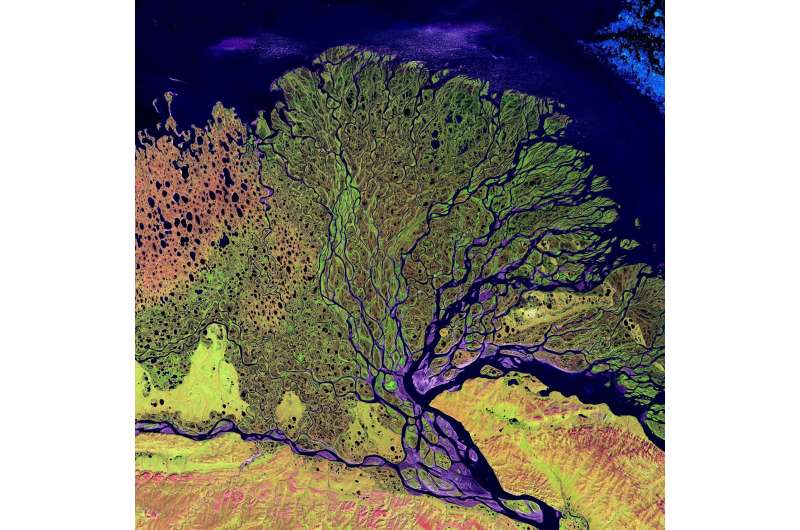This article has been reviewed according to Science X's editorial process and policies. Editors have highlighted the following attributes while ensuring the content's credibility:
fact-checked
peer-reviewed publication
trusted source
proofread
River deltas: Valuable and under threat

The livelihoods of millions of people who live in river deltas, among the world's most productive lands, are at risk. Created where large rivers meet the ocean and deposit their natural sediment load, river deltas are often just a few meters above sea level. And while they make up less than 0.5% of the world's land area, river deltas contribute more than 4% of the global GDP, 3% of global crop production, and are home to 5.5% of the world's population.
All of these values are highly vulnerable to imminent global environmental change, according to a new Stanford University-led study published in One Earth.
"It is often not rising seas, but sinking land due to human activities that puts coastal populations most at risk," said study lead author Rafael Schmitt, a lead scientist with the Stanford Natural Capital Project. "Our research highlights that this relevant global risk is grossly understudied for all but very few coastal regions."
Under natural conditions, deltas are subject to a number of factors that together create dynamic but stable systems. For instance, sediment supplied from upstream river basins builds new land even when sea levels are rising. Sediment supply is also critical to offset the effect that the recent, unconsolidated delta land compacts continuously under its own weight.
Today, all of these processes are out of balance. River deltas are cut off from their natural sediment supply by dams and reservoirs, and the little sediment still reaching deltas cannot spread because of artificial levees and dikes. Additionally, groundwater pumping and extraction of hydrocarbons creates subsidence, and coastal vegetation, which can provide some protection, is lost to make space for farmland and tourism.
Those local drivers, together with global sea level rise, lead to relative sea level rise, meaning that sinking lands amplifies the effect of rising seas, a combination that could cause significant parts of the world's largest deltas to fall below the rising sea by the end of the century.
Little is known about local and regional drivers of relative sea level rise. So, Schmitt's study set out to identify key drivers of land loss and vulnerability across the world's major deltas, and the knowledge gaps impeding more sustainable delta management, for specific deltas and on a global scale.
In their synthesis effort, the authors find overwhelming evidence that it is not sea level rise, but sinking land, that puts global deltas most at risk. This is of great importance for managing river deltas, according to Schmitt. While climate change is increasingly recognized as a risk to coastal livelihoods and global wealth and security, this is only one part of the story.
Of course, climate mitigation is important to curb global sea level rise. However, fighting overuse of local natural resources in river deltas and their contributing basins would have much greater and more immediate effects, posing both an opportunity and a responsibility for coastal nations.
More information: Suzanne McGowan, Dammed deltas: sinking Asian deltas in a warming world, One Earth (2023). DOI: 10.1016/j.oneear.2023.02.013. www.cell.com/one-earth/fulltex … 2590-3322(23)00093-3
Rafael Jan Pablo Schmitt et al, Data, knowledge, and modeling challenges for science-informed management of river deltas, One Earth (2023). DOI: 10.1016/j.oneear.2023.02.010 , www.cell.com/one-earth/fulltex … 2590-3322(23)00090-8
Journal information: One Earth
Provided by Stanford University


















